Explore the architectural marvels and captivating history of Portugal’s medieval past on this private tour. From the imposing Templar fortress of Tomar Castle to the ornate Gothic splendor of Batalha Monastery, this journey showcases the country’s rich cultural heritage. Uncover the legends of the Templar Order, marvel at the nautical influences of the Age of Discovery, and discover the tragic love story that shaped the royal necropolis of Alcobaça Monastery. With each destination, travelers are immersed in the tales that have defined Portugal’s fascinating medieval legacy.
Key Points
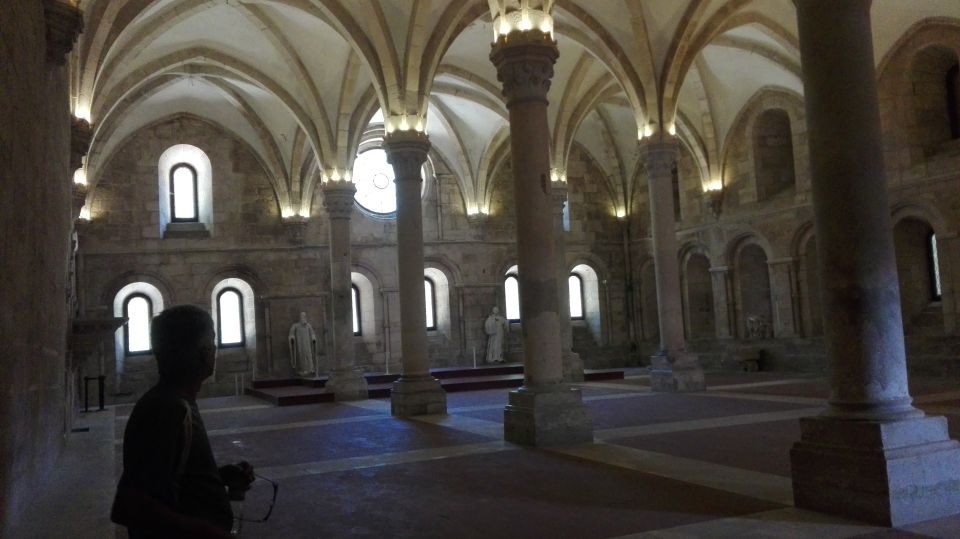
- Explore the architectural marvels and esoteric significance of Tomar Castle, the former headquarters of the Templar Knights and Order of Christ.
- Admire the ornate Gothic masterpieces of Batalha Monastery, commissioned to celebrate Portugal’s maritime explorations and seafaring heritage.
- Visit the Alcobaça Monastery, a Cistercian complex that served as a royal mausoleum and shaped the social fabric of medieval Portugal.
- Uncover the tragic love story of King Pedro I and Inês de Castro, which unfolded within the Alcobaça Monastery.
- Gain insights into the influential role of Cistercian monasteries as centers of learning, agricultural innovation, and political advisory in Portugal.
Visit the Castle and Convent of Christ

The tour begins with a visit to the Castle and Convent of Christ in Tomar, where visitors can appreciate the architectural beauty of this historic site and learn about the intriguing history and legends of the Templar Order and Christ Order.
The castle’s unique blend of Romanesque, Gothic, Manueline, and Renaissance styles showcases the complex evolution of the site over centuries.
Guests will discover the symbolic and mystical elements of the orders, uncovering the significance of the iconic Templar Cross and the complex religious and political dynamics that shaped Portugal’s past.
This in-depth exploration provides a fascinating glimpse into the influential role these orders played in the nation’s history.
You can also read our reviews of more tours and experiences in Fatima.
Architectural Beauty of the Castle and Convent
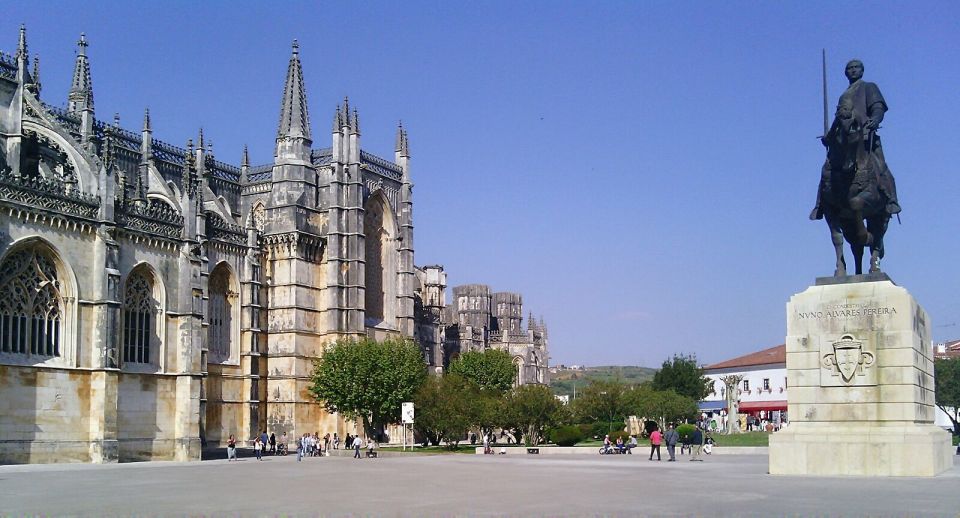
Towering above the serene town of Tomar, the Castle and Convent of Christ showcases an architectural tapestry that spans centuries, blending Romanesque, Gothic, Manueline, and Renaissance elements into a captivating spectacle.
The immense complex, once the headquarters of the Templar Knights and later the Order of Christ, boasts intricate stonework, grandiose towers, and ornate cloisters.
Visitors can marvel at the Charola, an extraordinary Templar church with a unique circular design, and the Claustro da Lavagem, a lavishly decorated 16th-century cloister.
The interplay of light and shadow accentuates the building’s architectural details, inviting visitors to unravel the rich history and symbolism woven into every nook and cranny of this remarkable UNESCO World Heritage site.
History and Legends of the Templar Order
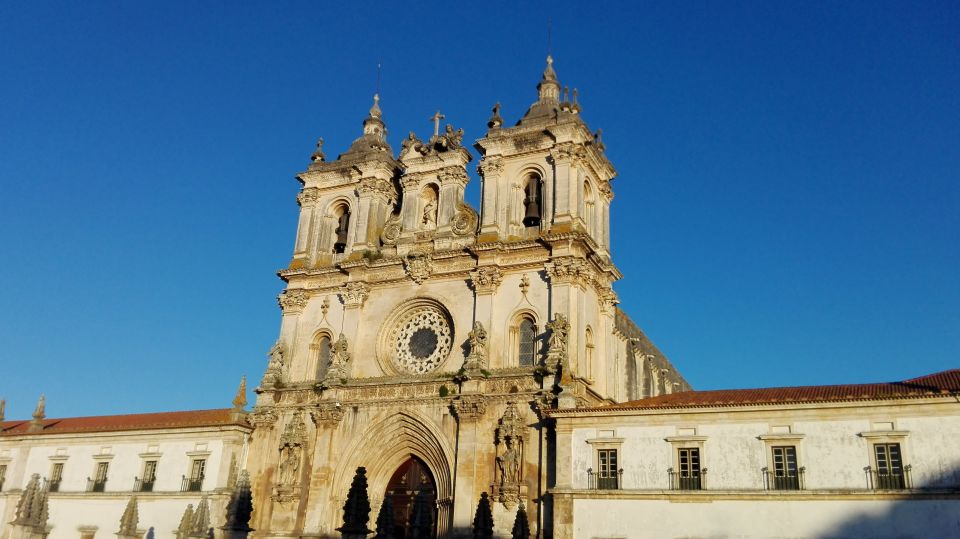
Beyond the architectural grandeur of Tomar’s Castle and Convent lies a captivating history steeped in the enigmatic legacy of the Templar Order.
Established in the 12th century, this elite military order played a pivotal role in the Crusades and left an indelible mark on the region’s history and legends.
Visitors will learn about the Templars’ profound influence, from their skilled military prowess to their esoteric beliefs and rituals.
Explore the symbolic imagery and mystical undertones that permeate the site, uncovering the Templars’ enduring impact on the spiritual and cultural landscape of Portugal.
Explore the intriguing stories and mysteries that have captivated historians and intrigued the public for centuries.
Symbolism and Mysticism of the Orders
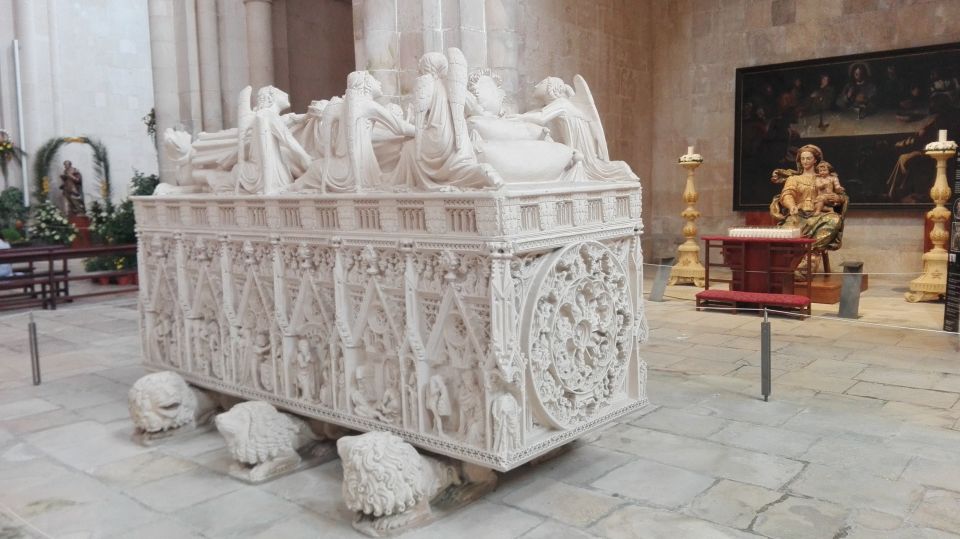
Intricately woven throughout the architectural marvels of Tomar’s Castle and Convent are profound symbols and mystical undertones that reflect the esoteric beliefs and rituals of the Templar and Christ Orders.
The symmetry and geometry of the buildings, with their intersecting arches and interlocking designs, symbolize the orders’ emphasis on harmonious balance and sacred geometry.
The octagonal Charola, or central rotunda, evokes the circular temples of Jerusalem, evoking the Templars’ origins.
Carved symbols like the Templar cross, pentagram, and sun motifs represent concepts of faith, protection, and enlightenment.
Visitors can uncover layers of meaning in the intricate tile work, stained glass, and sculpted details, gaining insight into the spiritual world of these influential military-monastic orders.
More Great Tours NearbyAdmire the Gothic Architecture of Batalha
Moving from the esoteric symbolism of Tomar, the tour then takes visitors to admire the impressive Gothic architecture of the Batalha Monastery.
Constructed over the course of nearly two centuries, the monastery’s ornate façade and vaulted ceilings showcase the technical mastery and artistic vision of medieval Portuguese builders.
The magnificent structure boasts:
- Intricate stone carving and tracery adorning the main portal
- Soaring ribbed vaults that create a sense of grandeur and light-filled spaces
- Ornate rose windows that flood the interior with colorful natural illumination
- Elaborately carved royal tombs and chapels that evoke Portugal’s proud heritage
The ‘Imperfect Chapels’ section that reveals the evolution of Gothic design remains unfinished.
- Porto to Lisbon With Aveiro-Coimbra-Fátima-Nazaré-Óbidos
- Fatima Private Tour From Lisbon
- CENTRAL PORTUGAL: FULL DAY TOUR COIMBRA > FÁTIMA SEDAN
- Lisbon to Porto With Óbidos-Nazaré-Fátima-Coimbra-Aveiro
- Fátima, Batalha, Alcobaça, Nazaré and Óbidos Private Tour
- Porto: Private Transfer to Lisbon With Stops Until 3 Cities
History and Legends of Maritime Discoveries
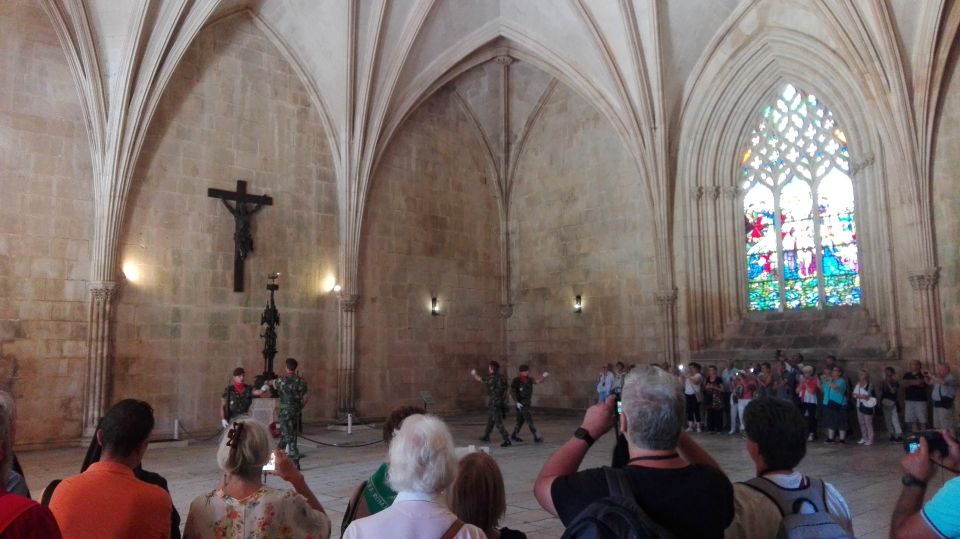
The Batalha Monastery‘s grand facade and magnificent architecture also reflect Portugal’s proud history of maritime discoveries, which transformed the small Iberian kingdom into a global colonial power.
The monastery was commissioned by King João I to commemorate Portugal’s victory over the Castilians at the Battle of Aljubarrota in 1385. This triumph paved the way for Portugal’s subsequent exploration of the seas, led by pioneering figures like Henry the Navigator.
The monastery’s design and construction were influenced by this maritime tradition, incorporating symbolic nautical elements that pay tribute to Portugal’s seafaring exploits.
As you wander through the monastery, you’ll uncover the fascinating history and legends surrounding this pivotal period in Portugal’s history.
Influence of Cistercian Order on Portugal
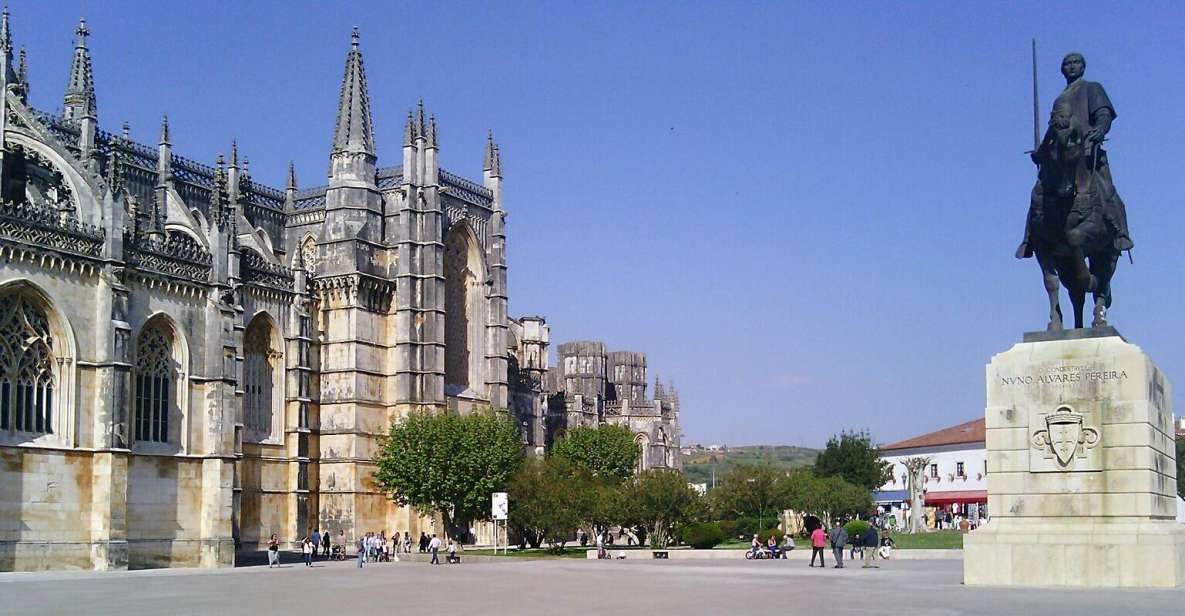
The Cistercian Order played a significant role in the creation and development of the Kingdom of Portugal, as its monasteries like Alcobaça provided a strong foundation for the country’s political and cultural identity.
The Cistercians’ influence can be seen in several ways:
- They introduced new agricultural techniques, such as land clearing and crop rotation, that improved productivity.
- Their monasteries became centers of learning, housing libraries and scriptorium that preserved important historical documents.
The Alcobaça Monastery, with its impressive Gothic architecture, served as a royal mausoleum for Portuguese monarchs.
Cistercian monks acted as advisors to the Portuguese crown, contributing to the expansion and consolidation of the kingdom.
The order’s emphasis on self-sufficiency and community living shaped the social fabric of medieval Portugal.
Tragic Love Story of Pedro and Inês
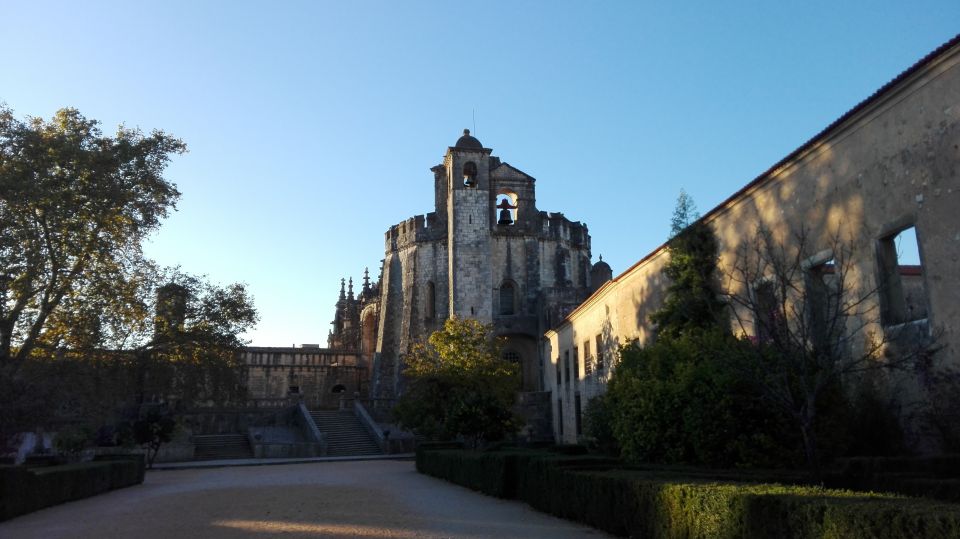
One of the most poignant love stories in Portuguese history unfolded within the walls of the Alcobaça Monastery, where King Pedro I and his mistress Inês de Castro are buried side by side.
The tragic tale began when Pedro fell deeply in love with Inês, a Galician noblewoman, despite his marriage to Constance of Castile. After Constance’s death, Pedro openly acknowledged Inês as his queen and had her crowned.
However, Inês’ influence over Pedro threatened the stability of the kingdom, and she was eventually murdered on the orders of Pedro’s father, King Afonso IV. Overcome with grief, Pedro later exhumed Inês’ body, had it dressed in royal robes, and forced his subjects to kiss her hand, acknowledging her as their queen.
Frequently Asked Questions
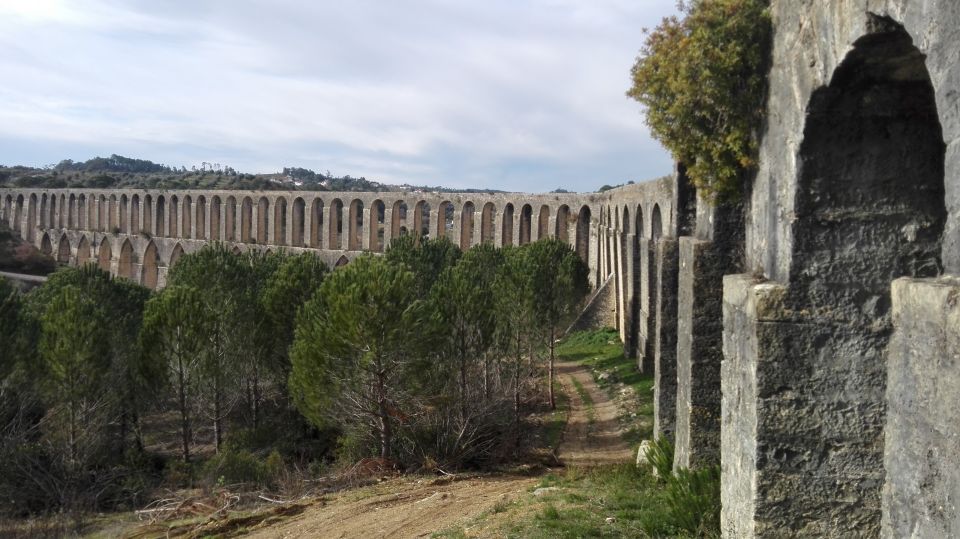
What Are the Group Size Restrictions for the Tour?
The tour does not specify any group size restrictions. The tour is offered as a private tour, allowing for flexibility in group size to accommodate the needs and preferences of the participants.
Can I Take Photos During the Tour?
Participants are generally allowed to take photos during tours, though some sites may have restrictions. It’s best to check with the tour guide about any photography policies before taking pictures at the historical landmarks visited.
Is the Tour Suitable for People With Dietary Restrictions?
The tour may accommodate people with dietary restrictions, though it’s best to notify the tour provider in advance. They can usually make arrangements to ensure the participant’s dietary needs are met during the tour.
Is There a Dress Code for the Tour?
There is typically no strict dress code for tours, though visitors should dress comfortably and modestly to respect the religious and historical sites visited. Comfortable walking shoes are recommended.
Can I Leave the Tour Group at Any Time?
Guests are generally expected to remain with the tour group throughout the excursion. Leaving the group at any time is not recommended, as it could disrupt the schedule and logistics of the tour. Check with the tour provider for their specific policies on this matter.
Recap
This private tour immerses visitors in Portugal’s captivating medieval heritage.
Exploring the Templar stronghold of Tomar Castle, the Gothic splendor of Batalha Monastery, and the royal necropolis of Alcobaça Monastery, it showcases the country’s rich cultural influences – from nautical discoveries to the pivotal role of Cistercian monasteries.
Travelers will uncover centuries-old legends and the tragic love story that has endured through time, offering a compelling glimpse into Portugal’s medieval past.
You can check availability for your dates here:More Private Tours in Fatima
- From Lisbon: Private Tour Full-Day Trip in Fátima, Nazaré and Óbidos
- PRIVATE TOUR TO FÁTIMA, ÒBIDOS & NAZARÉ
- From Lisbon: Fátima and Óbidos Private Day Trip
- Lisbon: Algarve,Benagil Cave, Lagos & Carvoeiro Private Tour
- Fátima Private Tour: Shrine| Sacred Path |Shepherds House
- Private Transfer Lisboa-Porto and Vice-Versa With 2 Stops
More Tours in Fatima
- Fátima, Nazaré and Óbidos Full-Day Tour from Lisbon
- Lisbon: Fátima, Nazaré and Óbidos Full-Day Tour
- Fátima: E-Bike Tour to Dinosaur Footprints Natural Monument
- Tour to Fátima, Nazaré and Óbidos – LUXURY SEDAN
- From Lisbon: Private Tour Full-Day Trip in Fátima, Nazaré and Óbidos
- Fátima tour by Luxury Mercedes
More Tour Reviews in Fatima
- Fátima, Nazaré and Óbidos Full-Day Tour from Lisbon
- Nazaré, Óbidos and Fatima: Day trip from Lisbon
- Lisbon: Fátima, Nazaré and Óbidos Full-Day Tour
- Faith, Caves & Ocean Waves: Portugal’s Most Soulful Day Trip
- From Lisbon: Santiago de Compostela Day Trip with Fatima
- Fátima: E-Bike Tour to Dinosaur Footprints Natural Monument
Not for you? Here's more nearby things to do in Fatima we have reviewed
- Fátima, Nazaré and Óbidos Full-Day Tour from Lisbon
- Nazaré, Óbidos and Fatima: Day trip from Lisbon
- Lisbon: Fátima, Nazaré and Óbidos Full-Day Tour
- Faith, Caves & Ocean Waves: Portugal’s Most Soulful Day Trip
- From Lisbon: Santiago de Compostela Day Trip with Fatima
- Fátima: E-Bike Tour to Dinosaur Footprints Natural Monument
- Tour to Fátima, Nazaré and Óbidos – LUXURY SEDAN
- From Lisbon: Private Tour Full-Day Trip in Fátima, Nazaré and Óbidos
- Fátima tour by Luxury Mercedes
- Lisbon: Sintra, Pena, Regaleira, Cabo da Roca & Cascais
- From Nazaré – Tomar, Fátima, Batalha, Alcobaça, & Óbidos
- PRIVATE TOUR TO FÁTIMA, ÒBIDOS & NAZARÉ
